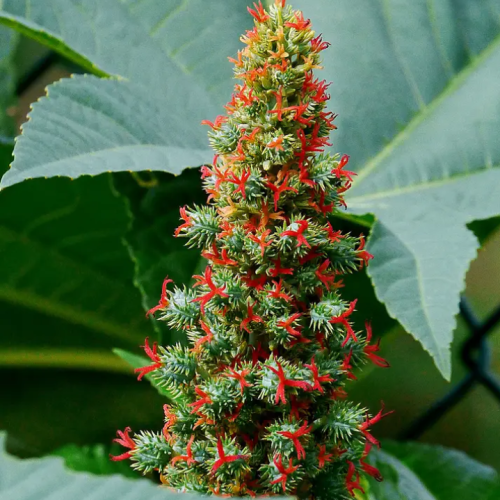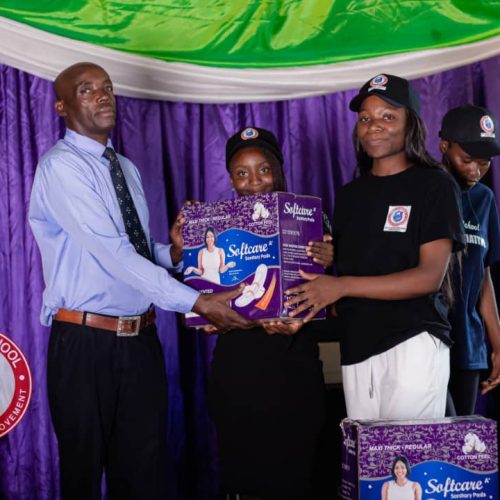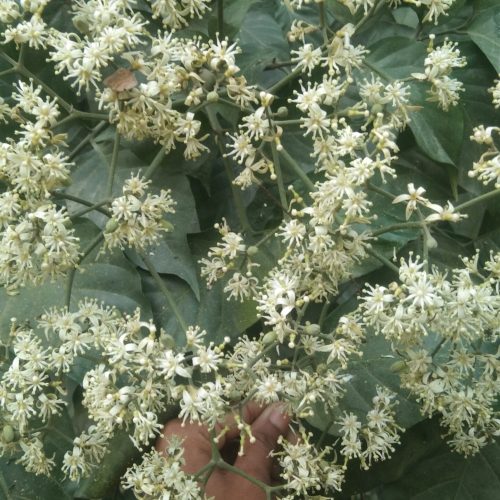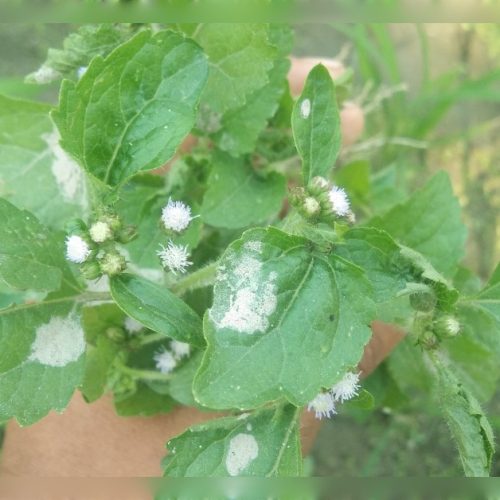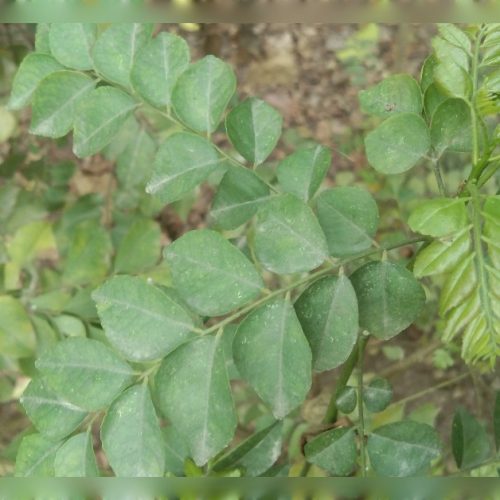Table of this Contents
ToggleWhat is a mosquito?
A mosquito is a type of small fly insect. Most species of mosquitoes feed on the blood of mammals. There are thousands of species that suck blood from the bodies of vertebrates, such as mammals, birds, reptiles, amphibians, and even some fish. Although the number of animals that suck blood from their body is very small, some mosquito pathogens are infectious. Diseases like malaria, dengue, filaria, yellow fever, Zika virus are transmitted through mosquitoes.
Male mosquitoes live only one day. Female mosquitoes typically live 6-8 weeks. And even if the male mosquito lives for more than a day; Their situation became absolutely critical.
These small flies have survived on earth for 2500 years.
Mosquito.
Mosquitoes are insects of the Culicidae family of the Diptera class. Important genera of this genus are Anopheles, Mansonia, Culex, Aedes, Psorophora and Haemogogus. Mosquitoes are carriers of many diseases including malaria, measles, yellow fever, dengue, viral encephalitis and some skin diseases. Female mosquitoes suck blood from vertebrate hosts with needle-like cutting and sucking mouthparts. Blood feeding is essential for mosquitoes before laying eggs. Male mosquitoes feed on flower and fruit extracts. About 113 species have been identified from Bangladesh among the three thousand mosquito species that exist in the whole world.
Four species of Anopheles carry the malaria pathogen in Bangladesh. The species Anopheles dirus, An. philippinensis, An. minimus and An. sundaicus. Four other species of mosquitoes that are thought to carry malaria parasites are Anopheles aconitus, An. vagus, An. annularis and An. maculatus var willmorei. Malaria outbreaks in Bangladesh usually occur twice a year: once in the pre-monsoon (May-June), the other in the post-monsoon (October-November). Diseases other than malaria include Culex quinquefasciatus (bancroftian type) and Mansonia species (brugian type). The long-hidden and recently identified viral disease dengue is transmitted by Aedes aegypti and Ae. albopictus and the lesser-known virus Japanese encephalitis is spread by the Culex tritaeniorhynchus mosquito.
Four mosquitoes known to carry malaria breed in rural and suburban areas. Malaria is spread in urban areas by certain new arrivals from rural areas to urban areas, especially Anopheles vagus, which breed throughout the country. Dengue-carrying mosquitoes lay their eggs in both artificial and natural reservoirs. Aedes aegypti is an urban species, but Ae. albopictus prefers rural environments. The causative species of goiter is Cx. quinquefasciatus is omnivorous, lays eggs everywhere, and bites in a variety of ways. The prevalence of smallpox is high in the north-western region of Bangladesh. About 80% of the disease caused by Cx. quinquefasciatus stinging. Mansonia lays eggs in aquatic plants, while Cx. tritaeniorhynchus prefers paddy fields.
In Bangladesh, mosquito netting with deltamicrons is used in many cases instead of spraying insecticides to kill adult mosquitoes. It has reduced human-mosquito contact considerably. Civil servants use organophosphates (malathion) as larvicides, and municipalities spray malarial or black oil in city drains. Government-sponsored pesticide spraying programs are often inadequate and ineffective.
Mosquito experts lay great importance on proper drainage system, cleaning of wetlands and ditches for successful mosquito control in the country. Disposing of accumulated water in household containers and care of natural water bodies is recommended. Local scientists have identified several native animal species that feed on mosquito larvae. Besides, fish and various types of aquatic insects are also benefiting. Some indigenous plant products have been proven to be larvicidal to mosquitoes. A plant species capable of trapping mosquito larvae has aroused considerable interest among scientists. Inclusion of these biocontrols in national mosquito control programs is recommended.
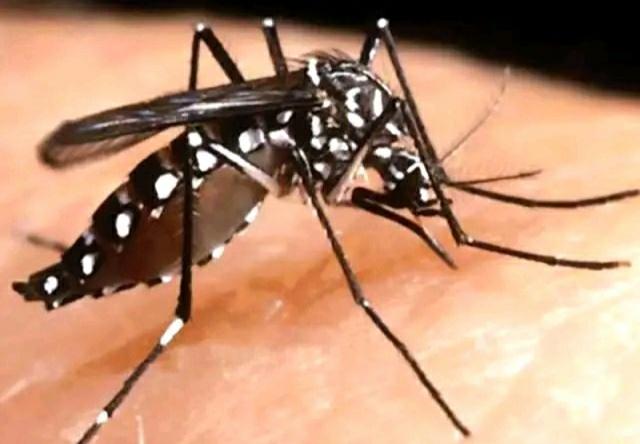
How many types of mosquitoes and what are they?
Mosquitoes are basically flies. So far, more than three and a half thousand species of mosquitoes have been found all over the world. Most of these are female mosquitoes. which act as vectors of blood-sucking and mosquito-borne pathogens. It is good to know that there are thousands of species of mosquitoes that suck blood from the bodies of vertebrates, mammals, reptiles, amphibians and even some fish. Several diseases are transmitted by mosquitoes that carry the virus. Malaria, dengue, filaria, Zika virus and yellow fever are some of the ones known all over the world.
Mosquitoes are actually insects belonging to crane flies which are called Nematocera in scientific terms. Some species of female mosquitoes suck blood and spread deadly infectious diseases. While some mosquito species do not suck blood, many of those that do suck blood by creating “high to low pressure” in the blood and do not spread disease. Among bloodsucking species, only females suck blood. So far, more than 3,500 species of mosquitoes have been found in different places around the world. Mosquitoes that regularly bite humans act as carriers of pathogens infecting millions of people every year. Other species that do not regularly bite humans, but are vectors of disease in other animals, become harmful when they are uprooted from their habitats for various reasons, such as sudden deforestation. Anopheles, Culex, Aedes and Haemagosus species of mosquitoes act as carriers of various diseases and these diseases are widely known among the general public.
Life cycle of mosquito:
The life cycle of mosquitoes is basically the same as that of flies, so it is divided into four stages. First the egg, then the pupa, the cocoon and finally the full-fledged mosquito. Adult female mosquitoes of most species lay their eggs in stagnant water or ponds. There are some species of mosquitoes that prefer to lay their eggs near water and other species of mosquitoes that lay their eggs in aquatic plants. Each species selects a location in or near water to lay its eggs and adapts to the environment. Some spawn in hearts, some spawn in temporary sinkholes, some spawn in swamps, and some spawn in salt marshes. Among saltwater spawning mosquitoes, an equal number of species home to freshwater and saltwater, with one-third adapted to seawater and the rest to salinity.
According to Wikipedia, there are differences in the way mosquitoes lay eggs depending on the species. The simplest method is that the female mosquito flies up and down in the water and lays eggs in the water. It mainly consists of Anopheles species. Eggs of Anopheles species are cigar-shaped and have floating elements on both sides. A mature female mosquito of some species can lay 100-200 eggs in her life cycle.
pig:
Mosquito larvae have well-formed heads with feeding mouths, legless thoraxes, and segmented abdomens. The lava grows to four levels and turns into muckite.
Mukkeet:
Mosquito larvae are comma-shaped in appearance. The head and thorax are fused with the abdomen. Moths can cut webs with the help of their stomachs. Most species of mosquitoes often have to come above water to breathe.
Complete:
The time from egg to full-fledged mosquito varies according to species. In most cases ambient temperature has a large effect. Some species take as little as five days to develop from eggs to full-fledged mosquitoes, but in most cases it takes 40 days or more in some species to become fully-fledged mosquitoes. Body size of mature mosquitoes depends on brood density and food availability in water. Although very small animals, mosquitoes become dangerous for human health and life from time to time. Sometimes life becomes deadly.
Currently, the people of Bangladesh, Malaysia, Philippines, India and Thailand are suffering from the outbreak of mosquito-borne dengue disease. Among these, dengue epidemic has reached its peak in Bangladesh. So far, the number of dengue cases across the country has exceeded 50,000 and the death toll is no less. According to various estimates, more than 100 people have died due to this disease so far.
There are many funny sayings about musk, one of which is famous is “gun to shoot musk”. At night, they entertain us with free music. But whatever you say, the mosquito has been the number one enemy of mankind since the dawn of time. You may be surprised to hear that about ten million people die every year due to the direct effect of Anopheles mosquito alone.
So let’s hum and enter the realm of Masha. 10 surprising facts about mosquitoes
Like the male, the female muskrat can survive by drinking sap from tree trunks or nectar from flowers. But the female mosquito needs human blood to form eggs. Females get energy by eating sap and honey, but the proteins or amino acids needed to produce mosquito eggs can only be obtained from human blood.
So the mosquito’s wife, the female mosquito, drinks warm fresh human blood to collect protein and other nutrients from the blood.
Living people have warm blood but dead people have cold blood, mosquitoes drink warm blood so mosquitoes do not bite dead people. After death they bite as long as the corpse’s blood is warm. They go to humans by detecting the presence of carbon dioxide. Carbon dioxide is exhaled by living people but not by dead people so it is not difficult for dead people.
a) They attack pregnant women the most. Because their breath contains 21 percent more carbon dioxide than normal people and their body temperature is 1.26 degrees higher than normal.
b) Attacks children more soon after.
c) Those who exercise more easily find trouble.
d) If some people say that O+ blood attacks people more, the reason is that the level of lactic acid in their blood is a little higher, so it is more room, but many times it is not correct.
e) They also prefer those who drink beer.
f) It has been proven by modern science that people who consume extra salty or potassium rich foods are also more likely to attack.
g) In some cases, some dark colors (black, blue and red) are responsible for attracting them, so they attack a little more those who wear these dark colored clothes, it is almost a proven fact.
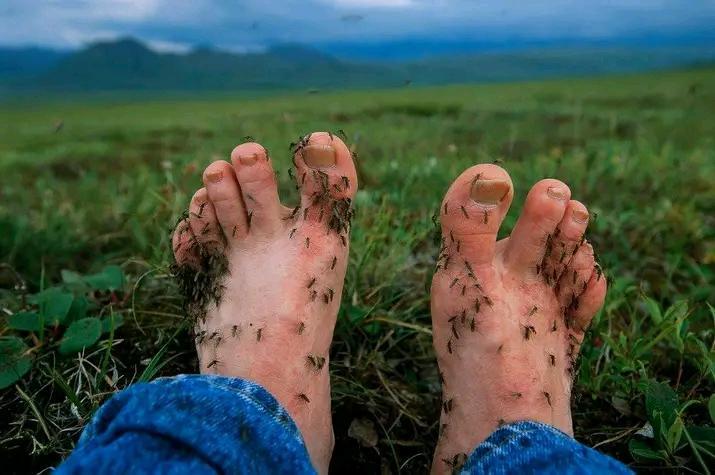
What do male mosquitoes eat?
Males do not have blood-sucking stings, so they depend on the juice of young leaves and honey from flowers! Even if it sounds strange, it’s true! Mosquito collects honey from flowers!
Diseases that are spread by mosquitoes.
There are about three and a half thousand species of mosquitoes in the world, of which only about 100 species spread diseases.
Until now, the research of scientists has shown that about 20 diseases are spread by mosquitoes.
Of all the people who die every year from insect attacks worldwide, mosquito-borne diseases account for the highest number of deaths.
World Mosquito Day is celebrated on August 20 every year to create awareness about mosquito-borne diseases.
Entomologists and researchers say that 123 species of mosquitoes have been found in Asia. so far. Among them, 14 species of mosquitoes are found in Asia.
Kabirul Bashar, an entomologist and professor of zoology at Jahangirnagar University, told the BBC that five mosquito-borne diseases are known in Bangladesh so far.
Dengue is taking deadly form along with the coronavirus.
Even if the symptoms of dengue fever and corona are the same, how can you understand the difference?
These include malaria, filaria, dengue, chikungunya and Japanese encephalitis.
Malaria.
Female Anopheles mosquitoes transmit malaria. A total of 36 species of Anopheles mosquitoes are found in Bangladesh, of which seven species spread malaria in Bangladesh.
Professor Kabirul Bashar said, out of these seven species, four species are the main carriers of malaria in Bangladesh.
At this moment, malaria is present in 72 police stations of 13 districts of Bangladesh. Malaria is mainly seen in hilly and border areas. It is during summer.
In 2008, about 85 thousand people were infected with malaria in Bangladesh, 154 people died. Later this number comes down.
Deputy Program Manager of the National Malaria Eradication and Aedes-borne Disease Control Program of the Department of Health. Afsana Alamgir Khan told the BBC that more than 90 percent of malaria cases now occur in the country’s three hill districts.
He said that the Department of Health is working on a plan to eradicate malaria from the country by 2030.
Filaria.
Filaria is transmitted worldwide by two species of Culex mosquitoes and one species of Mansonia mosquito.
In filarial disease, the hands, feet and other parts of the person become abnormally swollen. It is also locally called baby disease. In the world, 34 districts have cases of filariasis.
Dengue.
Two species of Aedes mosquito, Aedes aegypti and albopictus, mainly transmit the dengue virus.
Aedes mosquitoes breed in clean water stored in containers. Generally, its concentration is high during the rainy season, so the prevalence of dengue disease also increases during this time.
But in Bangladesh this year, along with the coronavirus epidemic, the incidence of dengue has increased many times.
According to the data of the Department of Health, 6,650 people were admitted to the hospital due to dengue infection from January to August 17 this year.
Dengue fever usually causes high fever and severe pain all over the body.
Severe abdominal pain may also occur. There is severe pain in the body, especially in the muscles. After 4/5 days of fever, red rashes like rash appear all over the body.
Nausea and vomiting may also occur.
How to know which mosquito repellent is safe?
Scientists reduce dengue by 77% using ‘miraculous’ method
Everyone has forgotten Mehmet Aziz, the ‘hero’ who eradicated malaria in Cyprus
If dengue is severe, the platelets in the blood decrease, the corners of the eyes, the gums or the nose may bleed.
Dr. Afsana Alamgir Khan said that the main cause of death due to dengue in Bangladesh is that people do not go to the doctor until the condition worsens.
He said that the doctor should be consulted as soon as the signs or symptoms are seen. The amount of platelets in the blood should be taken care of.
Chikungunya.
Chikungunya is also transmitted by the Aedes mosquito. Chikungunya was first diagnosed in Bangladesh in 2008.
Chikungunya fever symptoms are similar to common viral fever.
However, headache, nausea, weakness, chills, and rash are accompanied by severe pain in the joints or junctions of bones in the body.
Chikungunya usually clears up the fever within three to four days. But pain at the junctions of the bones is long-lasting for some.
Japanese encephalitis.
Professor Kabirul Bashar says that Japanese encephalitis is spread by Culex mosquitoes.
In 1977, the first case of Japanese encephalitis was identified in Madhupur forest area.
Later this disease was found in Rajshahi, Rangpur, Chittagong and Khulna regions at various times.
Professor Bashar says that these five types of mosquito-borne diseases are mainly seen in Bangladesh.
However, two patients with Zika virus were identified in Bangladesh a few years ago.
Since then, no one has been diagnosed with the Zika virus in the past few years.
As a result, he does not think that it exists in Bangladesh.
Ways to avoid mosquito-borne diseases.
Experts advise to be careful before contracting mosquito-borne diseases. Because if the doctor is not consulted at the right time after being infected, the risk of various complications including death increases.
Aedes mosquitoes responsible for dengue and chikungunya usually bite in the early morning and early evening. As a result, the doors and windows of the house should be closed during these two times
You should sleep with mosquito net while sleeping.
On the roof of the house or in the flower tub of the balcony, in the building under construction, waste tires or plastic containers – somewhere so that water does not accumulate for more than three to five days, arrangements should be made.
To avoid mosquito bites, use different types of repellents, such as coils, sprays, creams, etc., but be careful about its dosage and application.
These are all precautions before contracting any mosquito-borne disease. Experts say that if you are affected, you should seek medical treatment immediately.
Natural way to repel mosquitoes.
Some experts feel that natural ways to repel mosquitoes instead of using coils or sprays can be tried.
However, due to the increase in the number of mosquitoes in Dhaka, there is also concern about how effective these rules will be.
Below are some natural methods that have been used to repel mosquitoes for many years:
Neem has special properties to repel mosquitoes. In ancient times, neem oil was used to repel mosquitoes. It is said that if neem oil is applied on the skin, mosquitoes will not come near.
It is said that mosquitoes cannot tolerate the smell of camphor. Mosquitoes escape if the doors and windows of the house are closed and kept with camphor.
It is said that if lemon and clove are kept together, there will be no mosquitoes in the house. Placing them in the window will prevent mosquitoes from entering the house
Instead of throwing away the used tea leaves, if you dry them in the sun and light them, all the mosquitoes and flies in the house will escape with the smoke of the tea leaves. But it will not damage the respiratory system.
A mosquito flaps its wings about 300-600 times per second, the sound of flapping wings is what we hear when the mosquito flies.
Only female mosquitoes bite humans, not male mosquitoes.
Mosquitoes can fly at a speed of about one and a half miles per hour.
Within a week of hatching, mosquitoes bite humans and suck blood.
Besides biting mammals, mosquitoes also bite birds and reptiles.
A mosquito can absorb three times its own weight in blood.
The mosquito Name of a painful insect. Besides being an annoying nuisance, they also carry pathogens. These mosquitoes can sometimes cause death to people. Diseases like Chikungunya, Malaria, Dengue, Filaria, Yellow fever, Zika virus etc. are transmitted through mosquitoes. Sprays, coils, aerosols are not easy to repel mosquitoes. Even if we repel mosquitoes with these, our health is extremely damaged. Therefore, it is important to provide natural mosquito repellants. In earlier times, there were no mosquito coils or sprays.
How did people escape from mosquitoes at that time? Know at a glance 18 effective ways to repel mosquitoes-
1. Use of lemon and cloves.
Cut a lemon into wedges and stuff several cloves inside. Insert the whole clove into the lemon leaving only the clove head outside. Then keep the lemon slices on a plate in the corner of the room. In fact, you can stay free from mosquito infestation for several days. This method will completely eliminate mosquitoes from the house. If you want, you can also stick cloves in lemon and place them on the window grill. By doing this, mosquitoes will not enter the house.
Keep it in the corner of the room. In fact, you can stay free from mosquito infestation for several days. This method will completely eliminate mosquitoes from the house. If you want, you can also stick cloves in lemon and place them on the window grill. By doing this, mosquitoes will not enter the house.
2. Uses of Neem Oil.
Neem has a special mosquito repellent property. Neem oil is also good for skin. So you can use neem oil to get two benefits at once. Mix equal amount of neem oil and coconut oil and apply it on the skin. You will see that mosquitoes will not come near you and also the problems of skin allergy and infection will be removed.
3. Uses of mint.
Take some water in a small glass and put 5 to 6 mint leaves in it and put it on the dining table. Change the water every 3 days. According to research in the Journal of Bioresource Technology, mint leaves, like tulsi, also have the ability to repel mosquitoes. Not only mosquitoes but the smell of mint keeps many types of insects away from the house. Strain the mint leaves and boil them in water. Spread the steam of this water throughout the room. You will see that all the mosquitoes in the house have fled. You can also apply peppermint oil if you want.
4. Add lemon grass to the tub.
Thai lemon grass contains ‘citronella oil’ which gives off a strong aroma. This fragrance is like a mosquito. Mosquitoes don’t even come near it. As a result, mosquitoes won’t find you if you have a bunch of lemon grass around you. And lemon grass doesn’t look bad either. Place these plant tubs in places where you hang out with other family members or friends in the morning, afternoon or at night. Stay mosquito free like this.
5. Nishinda and neem leaves powder with dhuno.
Daily use of Nishinda and neem leaf powder along with washing helps to get rid of mosquitoes.
6. Yellow electric light.
To reduce the number of mosquitoes in the house, wrap the electric light in the house in yellow cellophane. The result will be yellow light. You will see less mosquitoes, because mosquitoes want to stay away from yellow light. Also, change the light bulbs indoors and outdoors. Mosquitoes are generally not attracted to all lights. LED lights, yellow ‘bug lights’, or sodium lights are useful in this regard. If you light them, the attack of mosquitoes outside the house in the evening will be reduced a lot.
7. Burn the tea leaves.
Dry the used tea leaves thoroughly in the sun without throwing them away. In this way, use the tea leaves instead of washing them. All the mosquitoes and flies in the house will flee from the smoke of burning dry tea leaves.
8. Burn neem leaves.
The smoke produced by burning neem leaves in charcoal or charcoal fire is very effective in repelling mosquitoes.
9. Catnip Oil.
A substance called nepetalactone in catnip oil is about 10 times more powerful than DEET (Diethyle-Meta-toluamide) to repel mosquitoes. Applying catnip oil will keep mosquitoes away.
10. Place the spoon box on the porch.
There is nothing to fear. Wasps eat hundreds of insects an hour. So you can make a bat house to repel mosquitoes. Place it on the balcony or near the ventilator and let the chicks do the work.
11. Keep the fan on.
Mosquitoes are very light. On the other hand, the speed of a fan is about two miles per hour. The speed of rotation of the fan is much faster than the speed of the mosquito, which easily attracts the mosquitoes to the blades. Keep your table fan or pedal fan on when mosquitos arrive in your living area or deck or other areas where mosquitoes can easily enter your home. You will get relief from mosquitoes as well as comfort in the heat.
12. Avoid black, blue and red clothes.
Avoid clothing in colors that mosquitoes like. What a surprise! Yes some mosquito species are attracted to some dark colors like black, blue and red. And they are also sensitive to heat. So keep the house cool and dress in light colors.
13. Uses of Camphor.
Mosquitoes absolutely cannot tolerate the smell of camphor. You can buy camphor tablets at any pharmacy. Place a 50 gram camphor tablet in a small bowl and fill the bowl with water. Then place it in the corner of the room. Mosquitoes will disappear instantly. Change the water after two days. Do not throw away the previous water. If you use this water for cleaning the house, you will also get rid of the pain of ants in the house.
14. Use perfume.
Mosquitoes stay away from fragrances. So, before going to sleep at night, you can put perfume, perfume or lotion on your body and go to sleep. It can be said that mosquitoes will be seen much less than usual.
15. Spray the garlic.
Garlic spray is a very effective natural way to repel mosquitoes. Mix 1 part garlic juice in 5 parts water. Fill the mixture in a bottle and spray it on the parts of the body where mosquitoes may bite. This way no bloodsuckers of any kind will come near you.
16. Stay away from standing water.
Make sure that there is no accumulation of water anywhere. If water accumulates around the house or in the yard, mosquitoes can breed there. So wherever the water accumulates, remove it. Prevent mosquito breeding.
17. Burn coconut husks.
Mosquitoes can remove the fibers on the coconut. Dry and shred the coconut husks. Hold a burning match stick in a wooden container. Mosquitoes will disappear within 5-6 minutes.
18. Kerosene oil spray.
Take the kerosene oil in a spray bottle. Add few pieces of camphor. Shake well and spray the room. There will be no mosquitoes.
Benefits of mosquitoes.
Except this species of mosquitoes, the rest of the mosquitoes do not harm us. They survive by eating the nectar or juice of trees and fruits. 1 Those that survive by feeding on stem sap play a very important role in plant pollination. 2 Mosquito larvae are an important food source for some birds, bats.
A mosquito is a small insect. Most species of female mosquitoes feed on the blood of mammals. Some mosquito pathogens are contagious. Diseases like malaria, dengue, filaria, yellow fever, Zika virus are transmitted through mosquitoes. Why did the creator create this blood-sucking creature?
Every animal is useful in some way. All have some advantages. But have we ever thought about the benefits of mosquitoes?
Mosquito breeding means hanging mosquito nets or lighting coils. And both these activities help you to be healthy and active.
Because there are mosquitoes, non-belligerent nations are able to use their unused, stored cannons. By setting cannons to kill mosquitoes, they are keeping the cannons active as well as giving a basic idea to the public about the use of cannons. Apart from that, instead of sitting idle like this, the army is engaged in shooting mosquitoes with cannons.
There are about 3,500 species of mosquitoes in the world, of which six percent of female mosquitoes feed on human blood. And among them some species only feed on blood but do not carry any parasites. Except this species of mosquitoes, the rest of the mosquitoes do not harm us. They survive by eating the nectar or juice of trees and fruits.
1 Those that survive by feeding on stem sap play a very important role in plant pollination.
2 Mosquito larvae are an important food source for some birds, bats.
3. Mosquitoes are the main food of some spiders, salamanders, lizards, chameleons, and frogs. So mosquitoes have an impact on the food chain.
4 Mosquito eggs are used by fish as food. Therefore, mosquitoes play a special role in meeting the food needs of fish.
1. Mosquito breeding means hanging mosquito nets or lighting coils. And these two activities help you to be healthy and active.
2. Because there are mosquitoes, non-belligerent countries are able to use their unused, stored cannons. By setting cannons to kill mosquitoes, they are keeping the cannons active as well as giving a basic idea to the public about the use of cannons. Apart from this, we can observe a greater degree of enthusiasm among the troops, as they are engaged in shooting mosquitoes with cannon instead of sitting idly.
About 1 million people die each year from mosquito-borne diseases; Due to which mosquito has become the deadliest animal in the world. Mosquito-borne diseases such as malaria, dengue fever, chikungunya and Zika have spread widely in nearly 100 countries of the world.
Research shows that carbon dioxide, smell and temperature emitted from the animal’s body help mosquitoes identify whether it is a human or another animal. Only female mosquitoes feed on blood from the carcass. And this blood is used as a source of protein to produce eggs for reproduction. Male mosquitoes do not bite humans, but only collect sap from plant sources.
But do these mosquitoes have any benefits?
Mosquitoes play a significant role in the Earth’s food chain. About 3400 species of mosquitoes do no harm. Mosquitoes are the main food of some spiders, lizards, chameleons and frogs. Besides, mosquito eggs are used as food by fish. Therefore, mosquitoes play a special role in meeting the food needs of fish. While the mosquito is in flight, dragon-flies, small birds and insects feed on the mosquito.
“Mosquitoes feed on nectar from flowers, which is essential for pollination,” said Lounibos, an entomologist at the University of Florida. If mosquitoes are completely wiped out, this will have an impact on many other food chains. However, many researchers say that other insects can easily fill the role of mosquitoes as pollinators and as food. But he warned, “The insect that will replace the mosquito will be more dangerous than the mosquito and will spread the disease faster.”
It is also believed that without mosquitoes, the number of birds would decrease drastically. According to many entomologists, humans cannot live in tropical jungle areas because of mosquitoes. If there were no mosquitoes in those areas, people would have cut down more trees and cleared the forests to settle.
Meanwhile, a large number of mosquitoes live in the North and South Poles. Mosquitoes are the main source of food for the many migratory birds that come here every year. So if there were no mosquitoes, about 50 percent of migratory birds would not come to the two poles. As a result the environment there will start changing.
Moreover, lakhs of cattle migrate to this part from abroad at different times of the year. To avoid mosquito bites, these cattle choose other routes avoiding the places where there are more swarms of mosquitoes. If suddenly there is no swarm of these mosquitoes, then these cattle will not know which direction to go. As a result, everyone will lose their way and die. And if they die in such numbers, what will other carnivores eat? Because the plants that are born due to the seeds in their dung will stop. As a result, the balance of the environment will be disturbed.
Although there are more than 3,000 species of mosquitoes in the world, less than 100 species are harmful to humans.
Many entomologists favor the eradication of this harmful mosquito species.
Many people think that eliminating all types of mosquitoes will seriously disturb the balance of the environment.
What would be the impact on the environment if there were no mosquitoes – see BBC’s Naguib Bahar report.
Characteristics of mosquitoes.
The characteristics of mosquito are:- How many parts are its body divided into. The body has segmented jointed appendages. The head has a pair of antennae and antennae. The soft body is covered by a tough coat rich in chitin. Its body has two pairs of wings for flying. The head has a pair of horns for sucking blood.
Mosquito larvae are comma-shaped in appearance. The head and thorax curve together with the abdomen. Mukkeet can swim with the help of its stomach. Most species of mosquitoes often have to come above water to breathe.
Mosquitoes are an animal that we all probably look down upon, right? It’s hard to find people who don’t hate mosquitoes at least. We eat so hard to make blood in the body, and that blood is being absorbed by this poor animal! It is about being annoyed or disgusted.
Well, why do mosquitoes eat blood? Why does he have to sing when he comes to eat blood? Let’s know something about mosquitoes in this article.
Different types of mosquitoes.
Mosquitoes are the largest group of animals belonging to the class Arthropoda flies. There are more than 3500 species of mosquitoes in the world. According to the country, however, the number is not more than one hundred and five. There are over two hundred species of mosquitoes in the United States. In Bangladesh the number is slightly less, about 123 species. But not all mosquitoes are harmful. In Bangladesh, out of 123, only 22 species of mosquitoes spread disease. They don’t just drink human blood either. Mosquitoes also partake in the blood of other mammals depending on the type, characteristics or nature. There are even species of mosquitoes that feed on fish blood.
So many parts in a small body!.
An adult mosquito has mainly 3 parts. Head, thorax and abdomen.
A. the head.
The head has different parts that help the mosquito to take food, see and smell.
1. Antennae: Mosquitoes can detect carbon dioxide emitted from a person’s breath through antennae. At the same time this organ is able to catch the variation of air.
2. Eyes: Like other animals, mosquitoes have two large eyes, with which they can detect the movement of a person or object in front of them.
3. Pulp: This organ lies between the two antennae. With the help of this, mosquitoes can smell the smell.
4. Proboscis: Although this organ is present in all mosquitoes, it is seen to play an important role in female mosquitoes. Because with the help of this, the mosquito pierces the skin of a person or animal and extracts blood. The male mosquito’s tentacles are not strong enough to pierce the skin.
b. chest.
The thorax of the mosquito is attached to the head at the top. And the bottom is connected to the wings and legs.
1. Tail: A small fan-like organ used for steering in flight.
2. Wings: Mosquitoes have two wings to fly..
3. Legs: Like other insects, mosquitoes have six legs.
4. Femur: This is the upper part of the leg.
5. Tibia: This is the mid-section of the leg.
6. Tarsus: This is the bottom of the foot. It enables mosquitoes to stand and walk on water.
c. stomach.
The abdomen of the mosquito is attached to the thorax. It also serves as part of the stomach, reproductive system and respiratory system.
Genitalia: This is the genitalia of mosquitoes. Female mosquitoes release eggs through this organ.
Why are mosquitoes addicted to human blood?
Why do mosquitoes run after people’s blood? Last year (2020), a group of scientists from Princeton University in New Jersey, USA, conducted a study to get the answer to this question. They collected Aedes aegypti mosquito eggs from about 27 different locations in sub-Saharan Africa. They are then released into a lab box for observation.
Speaking about the results of the research, Professor Noah Rose, a member of the research team, said that mosquitoes in all regions are not blood-poisoned. Mosquitoes are attracted to blood to meet the moisture requirement for breeding in areas where drought or heat is high. According to this researcher, they have to choose this path because of a kind of helplessness.
Why does the mosquito sing to the ear?
The mosquito flaps its tiny wings about two and a half hundred times a second. This flapping sound is what we know as mosquito song. Mosquitoes are so small that we only hear the sound when they come close to our ears. Now the question is, why is the human ear so dear to mosquitoes? Why do they hover around our ears?
Research suggests that the main reason for this is smell. Ears are identified as the dirtiest part of our body, especially the inside of the ear. As the ear hole is always open, it is easy for dust and dirt to enter inside it. If this dirt is not cleaned daily, it accumulates in the form of dirt. This dirt is called wax or ‘Kheel’.
Bees emit an odor, which mosquitoes love. That is why mosquitoes are seen roaming around the ears more.
But this is not the only reason. Scientists say, another reason could be carbon dioxide released from our body with breath. According to scientists, mosquitoes identify us through the carbon dioxide released from our body, the warmth and humidity of our body. Then mosquitoes are seen moving more around our nose and mouth.
Mosquito attraction varies from person to person.
Not all mosquitoes bite people. Citing a study published in 1998, the New York Times newspaper of the United States says that mosquitoes are more interested in the blood of men than women. Researchers say that they are at the center of attraction of mosquitoes because of the huge physical structure of men. Because obese men have a higher body temperature and exhale more carbon dioxide.
On the other hand, another group of researchers says that mosquitoes are more attracted to fertile women. Researchers are talking about the reasons mentioned in the case of men, i.e. excess of carbon dioxide in the breath and increase in body temperature. Pregnant women exhale 21 percent more carbon dioxide than other women.
Clifford W. Bassett, MD, Allergy and Asthma Care of New York, says that mosquitoes are attracted to lactic acid in the human body in addition to carbon dioxide. Animals can detect such chemicals from a distance of about 30 meters.
Mosquitoes are also particularly attracted to people who exercise or do physical work. Because that is lactic acid. After physical exertion, the muscles of our body release much more lactic acid than usual. And after getting the smell of this material, swarms of mosquitoes come running.
Blood type is another factor that makes guinea pigs attractive to mosquitoes. If your blood type is ‘O positive’, then you are a favorite food of mosquitoes! Researchers say the mosquito bite rate is about 83 percent for this group.
How long does a mosquito live?
According to the US Centers for Disease Control and Prevention (CDC), an adult mosquito can live for two to four weeks, depending on species, humidity, temperature and other factors, unless it dies on your hands before then.
Interestingly, female mosquitoes generally live longer than male mosquitoes. Only female mosquitoes roam around me for blood. So their risk of death is also high. But they live longer!
Diseases caused by mosquito bites.
The mosquito is a tiny insect, but there is probably no other pest like it in the world. Mosquitoes have existed on Earth since prehistoric times. Currently there are about three and a half thousand species of mosquitoes. Among them, Anopheles, Aedes, Culex species of mosquitoes are harmful to humans. Some of the mosquito-borne diseases are dengue fever, malaria, filariasis, chikungunya, Zika virus fever, yellow fever, Japanese encephalitis, West Nile fever, etc. Dr. Corporate Safety Officer (Pharmacovigilance), Beximco Pharmaceuticals Limited has written about the causes, symptoms, treatment and remedies of various mosquito-borne diseases in our country. Dr. Supriya Pal and M, P, H, Candidate, University of Alberta, Canada. Jannatul Mawa Dana
A single mosquito bite can be fatal for a human. As they carry various disease-causing viruses, bacteria and parasites, mosquito bites kill around 1 million people worldwide every year.
dengue fever.
Dengue fever is the leading cause of mosquito-borne infections worldwide. This disease is caused by dengue virus. Dengue virus enters the human body through Aedes aegypti and Aedes albopictus mosquitoes. The existence of this virus has been found in about 141 countries of the world including Southeast Asia, South America. About 40,000 people die of dengue fever every year. Dengue is the most important disease in the context of Bangladesh. In 2000, the first dengue patient was identified in Dhaka. The trend of this disease is still observed more in Dhaka city. In 2019, 1 lakh 1 thousand 354 people were infected and 179 people died due to dengue outbreak across the country. Dengue fever has started to take a serious form amid the record number of deaths and infections of the coronavirus in Bangladesh. July 2021 saw the worst dengue situation since the outbreak of the coronavirus.
Also, the number of dengue patients, including children, is increasing in hospitals. Dengue fever season in Bangladesh is usually from June to September. According to the data of the Department of Health, 1,405 people were infected with dengue fever in 2020, but in July this year alone, the number of patients was 2,286. During the Corona period one should be very careful to prevent dengue as the symptoms of the two diseases have some similarities. There are 4 serotypes of dengue virus. Any of these can cause dengue fever. After previous infection with one serotype, infection with another serotype is usually severe and increases the risk of death.
Symptoms.
Symptoms of dengue fever last for two to seven days.
* High temperature fever (104-105 degrees Fahrenheit)
* Joint and muscle pain.
* Headache.
* Pain behind eyes.
* Vomiting or nausea.
* Rash or red bumps on the body.
Difference between Dengue and Corona.
Both dengue and corona are characterized by fever, headache, body aches and loss of appetite. However, in case of dengue, the symptoms like respiratory distress, diarrhea and loss of smell are not present as in corona patients. Rather, four-five days after the onset of fever, the body may develop a red allergy-like rash.
Identification.
Blood antigen test (NH1 Antigen) is done to know if dengue is infected. Detection of dengue antibodies in the blood can also indicate whether dengue has occurred previously. Apart from this, dengue can be definitely identified by PCR test.
Treatment.
There is no specific treatment for dengue fever so far. For common symptoms of mild dengue fever, medicines should be taken as prescribed by a registered doctor. Apart from this, plenty of water and liquid foods, vitamin C-rich fruits, high protein foods such as eggs, milk, liver, fish etc. should be consumed.
Although common dengue is similar to influenza, dengue hemorrhagic fever or severe dengue fever is characterized by decreased blood circulation and bleeding. After dengue infection, any of the numerous small spots like red dots under the skin, red colored urine, blood in the stool, bleeding from the nose or ears, etc. should be understood as severe dengue and should be admitted to the hospital immediately.
Because most of the deaths are due to severe dengue fever. However, people with high blood pressure, heart disease, diabetes, liver or kidney problems and elderly and pregnant women should be admitted to the hospital even if they have common dengue fever. If the dengue patient’s blood is low, Anuchakrik may need to be given through blood transfusion.
Prevention of dengue infection.
Aedes mosquito, the carrier of dengue, lays its eggs in clear water that has accumulated in human habitations for 3 days. So buckets, vases, plant tubs, unused empty pots, any containers or places with accumulated water should be thrown every 3-5 days to kill the mosquito larvae. The container should be scrubbed thoroughly to remove the mosquito eggs on the container. Apart from this, it is important to be careful not to allow water to accumulate in aquariums, under refrigerators or air conditioners, and in open water tanks of houses under construction. Aedes mosquitoes bite mainly during the day (after sunrise and before sunset). Such mosquitoes can also bite under bright electric lights at night. Mosquito nets should also be used during daytime sleep to avoid mosquito bites. Also, nets should be installed on the doors and windows of the house. Sprays, lotions, creams, coil mats, etc. can be used as repellants including Odomosque cream. All young and old should wear clothing that covers the body as much as possible.
Malaria.
Malaria is the oldest mosquito-borne disease. The disease existed in Greece and China even before the birth of Christ. Every year, more than 200 million people in the world are infected with malaria. Malaria is transmitted through the bite of female Anopheles mosquitoes. Plasmodium is a parasite responsible for this disease. It is spread mainly through 4 species around the world. Among them, Plasmodium falciparum species causes the most serious form of malaria. Malaria outbreaks are seen in various rural areas of Sylhet, Chittagong Hill Tracts, Mymensingh, Rangpur, Kurigram, Cox’s Bazar and Dhaka divisions of Bangladesh. Dhaka city is completely malaria free. Because it mainly spreads in or around forests with humid hot and tropical climate.
Symptoms.
Malaria symptoms usually appear 10-15 days after an Anopheles mosquito bite. The first 1-2 days are characterized by high fever (102°F or higher), accompanied by severe chills and headache. Fever comes off with profuse sweating and returns in the same way later. If treatment is not started quickly, the disease becomes complicated within 5-10 days. In case of Plasmodium falciparum species, the disease becomes complicated within 2-3 days. At this time organs like liver, kidney etc. lose function. As a result, the patient develops various neurological impairments including seizures and eventually dies. Malaria during pregnancy can cause miscarriage or low birth weight, or even death.
identification.
Physical symptoms and a history of travel to a malaria-prone area within 10-20 days should initially be assumed to be malaria. Rapid diagnostic test (ICT Test) can easily detect malaria antigen in blood. Apart from this, presence and species of malaria parasite in blood is confirmed through microscope.
Treatment and Remedies.
Prevention is possible at the individual level by protecting oneself from mosquito bites in malaria-prone areas. That’s why you have to sleep with mosquito nets at night. Apart from this, mosquito repellent sprays and coils can be used. Currently there are many modern and effective drugs in the treatment of malaria. Eg Mefloquine, Proguanil, Artesnet etc. However, all medicines should be taken only as per the advice of a registered doctor. The drug should be started 2 1/2 weeks prior to travel to a malaria-prone area and continued for several weeks after return.
Filariasis.
Another important mosquito-borne disease is filariasis. In Bangladesh it is caused by three types of parasitic worms – Wuchereria bancrofti, Brugia malayi, and Brugia timori. And the Culex mosquito is the carrier of this parasite. These parasitic worms breed in the human lymphatic system. Gout is more common in tropical and subtropical climates in Asia, Africa, South America, the Western Pacific and the Caribbean. Although Bangladesh has achieved a lot of success in eradicating smallpox, still around 44,000 people are affected by smallpox in 13 districts of the northern region.
Symptoms.
In most cases, no external symptoms appear after contracting this disease, but the kidneys, lymphatic system and immune system are affected. After a few years of disease spreading in the body, the underlying problems begin to manifest. Such as swelling of legs (elephantiasis or elephant-like legs), swelling of testicles in boys, breasts and genital vulva in girls. Treatment of such deformities is expensive, and also has a negative impact on work and social life.
identification.
Identification is usually done by direct observation of filarial parasites under a microscope. This parasite is found in the patient’s blood more at night, so it is necessary to collect samples from the patient’s body at night. Apart from this, it is also possible to diagnose filariasis by detecting antibodies in the blood.
Treatment and Remedies.
Treatment of ringworm includes anthelmintic drugs such as diethylcarbamazine, albendazole, ivermectin. Their dosage and duration should be followed as per the doctor’s advice. If an area of the body is very swollen, it may require various physiotherapy or surgery. The World Health Organization, through various NGOs and programs, distributes filarial anthelmintic drugs every year around the world and directly engages everyone in drug use. In endemic areas, this disease can be cured by consuming these drugs in certain doses every year. Apart from this, necessary measures should also be taken to protect against mosquito bites.
Chikungunya.
Chikungunya is a virus and the disease is spread by the Aedes aegypti mosquito. This virus was first found in Tanzania in 1952. This disease is mainly found in Africa, the Caribbean region, South America and the Indian subcontinent. Dengue fever can go undiagnosed early as it has many similar symptoms. Chikungunya was widespread in Bangladesh from April to September 2017.
Symptoms.
Symptoms appear within 7 days of being bitten by an Aedes mosquito.
* Fever.
* Headache
* Severe pain in joints and muscles
* Rash on the body
* Feeling tired and weak
Identification.
Chikungunya can be detected by various methods including viral antibody test and PCR test.
Treatment and Remedies.
There is no specific treatment for chikungunya. Medicines are usually given to relieve the symptoms of the disease. If affected, take adequate rest and drink plenty of water and fluids. Antibiotics have no benefit in such viral diseases. Rather, the side effects of antibiotics can cause problems in the long run. To protect yourself from mosquito bites, sleep with a mosquito net and use mosquito coils or sprays. And Aedes mosquito habitat and larvae should be destroyed and kept clean in the same way as to prevent dengue infection.
World Mosquito Day.
On August 20, 1897, Ronald Ross discovered the cause of malaria, which is carried by the Anopheles mosquito. World Mosquito Day is observed on August 20 to honor the discovery of Dr. Ronald Ross. The day is observed to be aware of mosquito-borne diseases, to take precautionary measures and to make the public aware of the harmful effects of mosquito-borne diseases.
You can also visit our another post;
Eyeliner is one kind of cosmetic product



